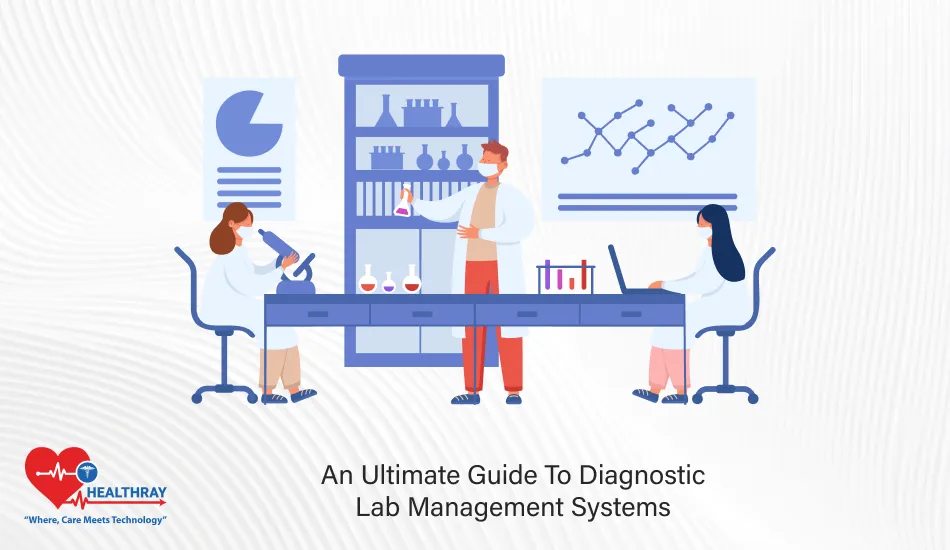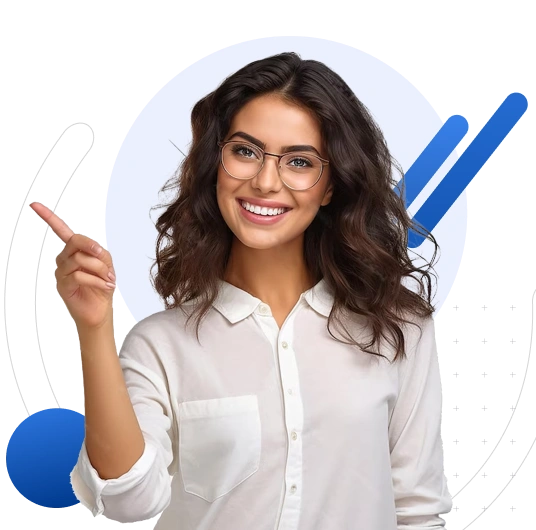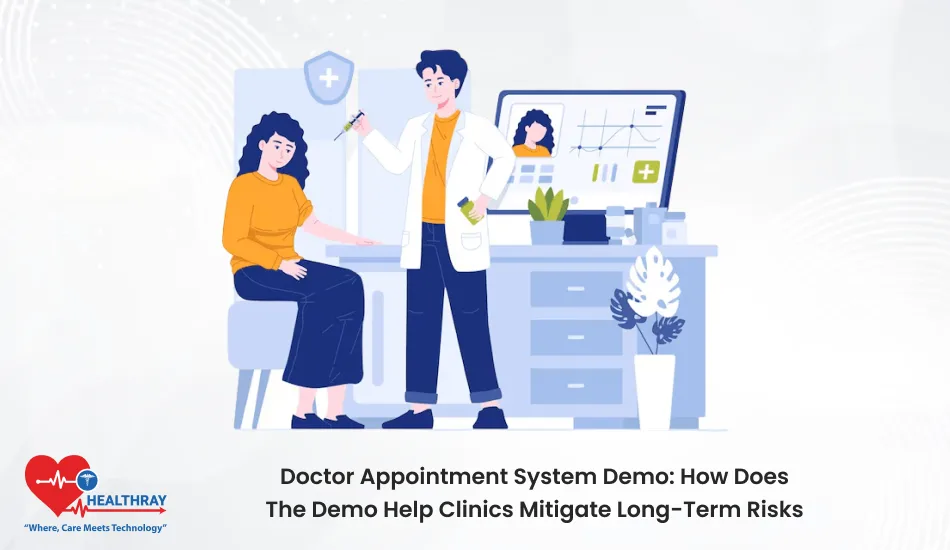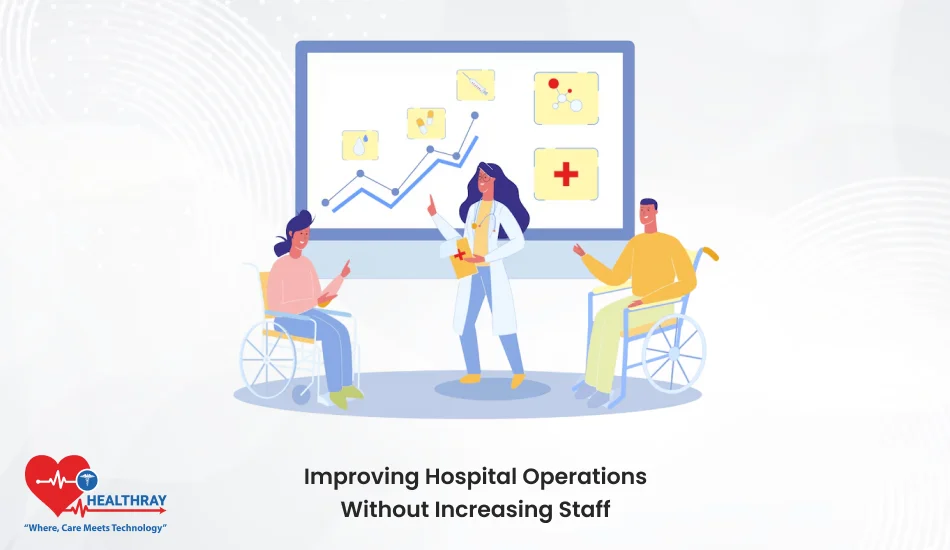The management of a diagnostic laboratory is not just running tests and reporting results; it’s about keeping the operation effective and accurate, with data precision at its best, while compliance with strict regulatory standards is a must. And that is where Diagnostic Lab Management Systems-often called Laboratory Information Management Systems, or LIMS-come in.
These systems will help in streamlining all processes starting from sample management to report generation, thereby making them indispensable for the modern lab. However, the selection of an appropriate system can never be so cut and dried. It requires deep insight into your laboratory needs and challenges, and what features will deliver the greatest value.
This guide will walk you through the core of Diagnostics Management Systems. You will go through the main features to look out for, the benefits derived from them, and how to go about the implementation process. Whether you are a laboratory owner, administrator, or even managing laboratory software, this guide will help you in making informed decisions toward optimizing your operations.
Key Features of Lab Diagnosis Management System
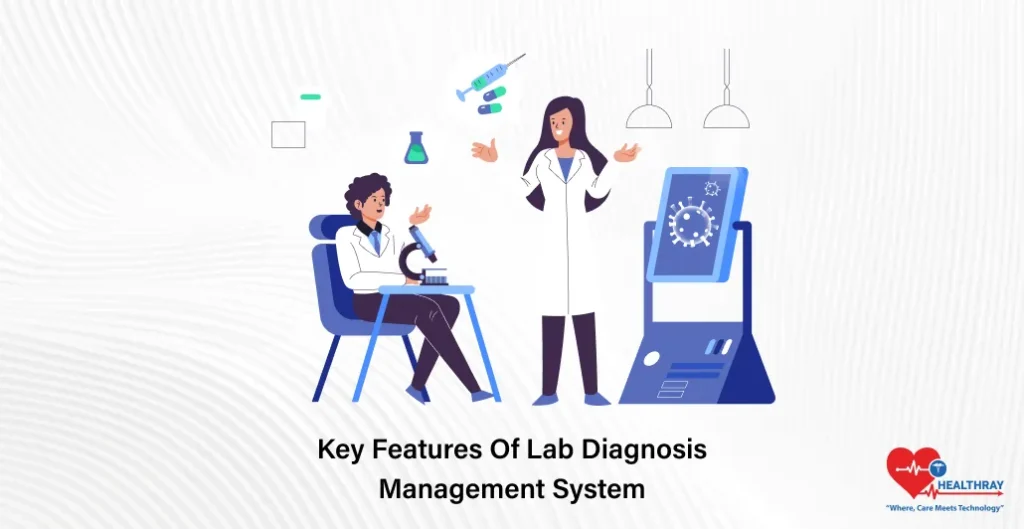
A LIMS is only as good as the functionalities it offers. The correct set of features can make all the difference in the way a laboratory operates: faster, more accurately, and better equipped to fulfill the needs in today’s healthcare. The following are the major features that any LIMS must include:
Sample Management
The effective handling of the samples is at the very heart of any form of laboratory operations. A good LIMS allows for seamless tracking of the sample, from its registration to storage and disposal. This minimizes the risk of sample loss and misidentification, ensuring that every result can be traced back accurately.
Automated Workflows
Automation, therefore, is a game-changing element to be considered in labs that wish to cut down on manual processes. Besides saving time, other features include automated scheduling, barcode generation, and result entry, which will reduce errors. Workflow automation will enable the lab staff to focus on more critical tasks.
Data Tracking and Reporting
These laboratories generate a huge amount of data every day. A well-structured LIMS software systemizes the generated data so that it can be easily retrieved and analyzed. Advanced reporting tools will help the user generate customized reports, study trends, and facilitate decision-making based on facts.
Compliance Management
When running a laboratory, there is no getting around industry regulations. A laboratory information management system enables the labs to comply with standards such as ISO 15189 and HIPAA, among others. Audit trails, protocols for validation, and secure storage of data are some features that assure the laboratory of continued and complete compliance with set regulations.
Integration Capabilities
Present-day laboratories make use of several instruments and software systems. A good LIMS integrates with these for smooth data exchange. The integration reduces manual data entry and connects all the lab processes efficiently.
Advantages of a LIMS Implementation
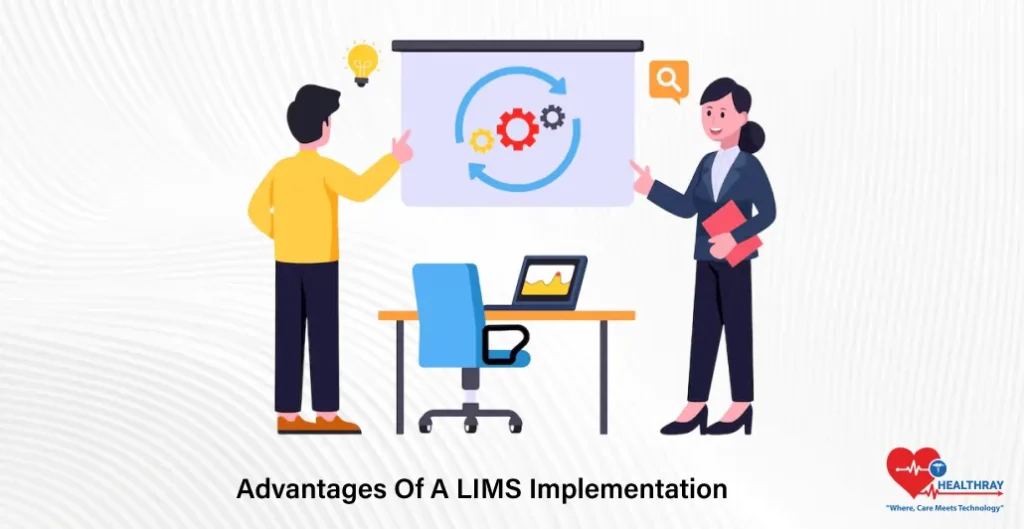
Setting up a Laboratory Information Management System is not just about being organized; it is also about gaining efficiencies, being compliant, and making quality improvements throughout your operations. Here’s how the adoption of a LIMS can make a difference:
Operational Efficiency Improved
Most laboratory processes are slow and prone to some kind of human error. Such mundane tasks as data entry, scheduling, and reporting are automated with the LIMS system. Productivity increases, allowing your team to have more time for high-priority tasks such as analysis and decision-making.
Improved Data Accuracy and Integrity
With manual handling, data entry errors are inevitable. A LIMS minimizes this risk because it ensures consistency and accuracy in every juncture. You can maintain a trustworthy record of all lab activities with the inclusion of inbuilt checks and audit trails.
Smarter Compliance
One major concern in the laboratory is regulatory requirements. The LIMS enables laboratories to follow CLIA, ISO, and HIPAA standards by offering secure data handling, frequent audits, and process validation features. This protects your lab from fines while you build trust with your customers and any other relevant stakeholder.
Faster Turnaround Times
In Diagnostic Lab Solutions, speed means everything, especially when dealing with time-sensitive cases. A LIMS accelerates sample processing and the delivery of results by automating workflows, ensuring that no step is missed out. Faster turnarounds mean better client satisfaction and superior patient outcomes.
Scalability for Growth
The demands on any laboratory operation will continue to grow with the laboratory itself. A LIMS will grow with your laboratory to manage increased sample volumes, new services, and expanding compliance needs. It is thus future-proof as an investment.
Centralized Data Management
Through a LIMS, all of your data-from patient information down to test results-are stored in a single location. This makes access easy and assures you that anyone in your team has the most updated information in case it is needed.
How to Choose the Right LIMS for Your Laboratory
A well-chosen LIMS can make a huge difference in the efficiencies and compliances of any given laboratory. The following is a step-by-step guide in selecting a system that best suits your needs:
Assess Your Lab’s Needs
Clearly understand the current operations and challenges of your laboratory. Ask yourself these questions:
- What workflows need automation?
- How many samples do you handle daily?
- Do you have specific regulatory requirements that you need to comply with? The following assessment will help identify what features and capabilities your LIMS must have.
Assess LIMS Vendors
Not all LIMS solutions are created equal. Research vendors extensively and compare their offerings. Consider:
- The experience of the vendor in the diagnostic laboratory industry
- Customer reviews and testimonials
- Ongoing support and training Availability Shortlist those vendors with a good track record of success whose offerings match the objectives of your lab.
Consider Scalability
Your lab is ever-changing. Select a LIMS that will grow with you, whether you need to process more samples, add new instruments, or expand your number of lab locations.
Check Integration Capabilities
A LIMS should be easily integrated with your current equipment and software. Look for a system that already supports standard laboratory instruments and provides APIs to connect third-party applications.
User-friendliness Rating
A user-friendly system saves time, reducing the learning curve of your workforce. Request a trial or demo to understand exactly how intuitive the interface is, and how well it fits into your daily workflow.
Prioritize Data Security
Patient information and test results are highly sensitive in nature, so the LIMS should contain appropriate security features, including encrypted data storage and user access control, ensuring that data protection regulations are upheld.
Budget Wisely
While cost shouldn’t be the sole deciding factor, good value for money will be required of a LIMS. Consider the overall cost of ownership, including licensing fees, implementation costs, and ongoing maintenance.
Request References
Ask the vendor for references to laboratories similar to yours. Actual users’ experiences can be very enlightening with regards to the LIMS’s actual performance in operation.
Implementation Challenges and Solutions
A LIMS adoption can be a very transformative step, yet not without its set of challenges. Knowing the various challenges in advance and planning solutions can make the process smoother for your lab.
Resistance to Change
Challenge: Resistance by lab staff to new technology could arise from a fear of disrupting the status quo or unfamiliarity with it.
Solution: Engage your team early in the process, clearly communicate how the LIMS will improve their workflow, and provide hands-on training that will give them confidence.
Data Migration Complexities
Challenge : Migrating the historical data to the new system is both tedious and error-prone.
Solution: In collaboration with the selected LIMS Software provider, create a strategy for migrating data. Leverage the use of technology that will provide automated data transfer, and validate the integrity of the data migrated.
Integration with Existing Systems
Challenge: The integration of LIMS with lab instruments and existing software may pose a technical challenge.
Solution: Select a LIMS that has demonstrated an ability to integrate, then work with the vendor to establish interfaces and perform adequate testing prior to go-live.
Regulatory compliance issues
Challenge: Make sure that the LIMS will meet the compliance standards which are required within a particular industry.
Solution: Verify that the LIMS complies with the applicable standards, such as ISO 15189, HIPAA, or CLIA. Periodic audits should be performed to ensure ongoing compliance.
Downtime During Implementation
Challenge: The new system would temporarily disrupt lab operations.
Solution: Plan implementation in phases: non-critical processes first. Major changes are scheduled in low activity periods. Maintain backup systems.
Training and Skill Gaps
Risk: The lab personnel may find the new system difficult to operate.
Solution: Comprehensive training courses, role-based. User manuals, video tutorials, and any necessary access to support from the vendors should be provided.
Cost Overruns
Challenge: Unpredictable implementation costs may be a burden for your budget.
Solution: Create a detailed budget for the implementation, with the help of the vendor. Contingencies against unforeseen costs will prevent surprises.
Ensuring User Adoption
Challenge: The staff might fall back to old ways if the system becomes cumbersome.
Solution: In the first weeks of use, monitor consumption and ask for feedback. Respond to their feedback with changes and point to success stories in order to reinforce value.
Future Trends in Laboratory Information Management Systems
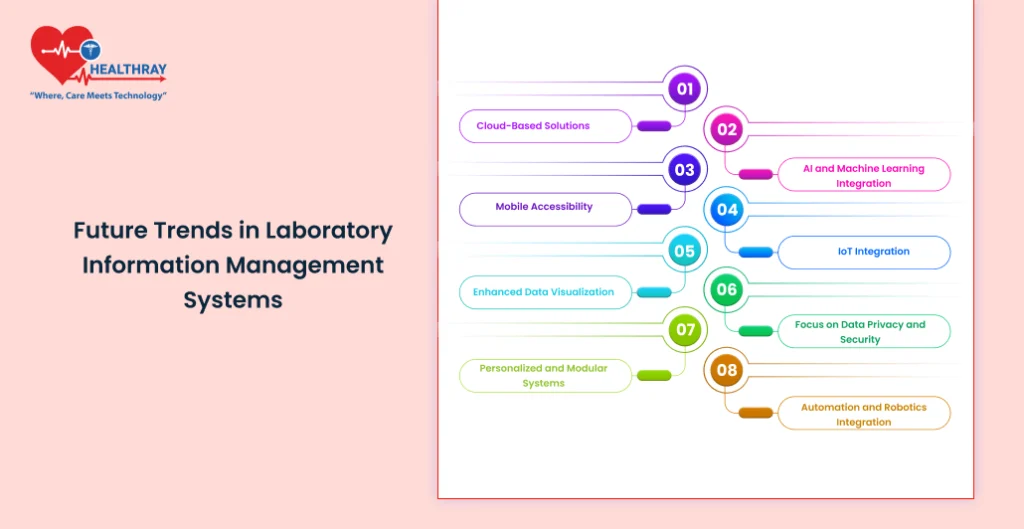
Further developments in the field have widened the scope of Laboratory Information Management Systems to keep pace with the emerging demands of modern diagnostic laboratories. Some of the trends that set the future for LIMS include:
Cloud-Based Solutions
Accessibility and scalability make cloud-based LIMS increasingly popular. In fact, this class of systems can be accessed from anywhere, reducing the need to rely on on-site servers, while also offering improvements in data security and ease of updating in general.
AI and Machine Learning Integration
AI and machine learning are expanding the functions possible with LIMS. Predictive analytics could enable laboratories to project their workload, recognize trends, and make more thoughtfully considered decisions. AI is also helping automate high-end tasks, such as image analysis and anomaly detection.
Mobile Accessibility
With mobile-friendly LIMS, laboratory staff will be able to perform their tasks on the go-from sample tracking to reviewing reports-using mobile apps for greater flexibility and convenience, especially in multi-site lab operations.
IoT Integration
The IoT in general is changing the way labs work. Integration of IoT devices with LIMS systems will enable automatic data capture from instruments within the laboratory for real-time updates, thus reducing errors in manual data entry.
Improved Data Visualization
Advanced reporting and data visualization tools are now becoming the standard in today’s LIMS. Dashboards present key performance metrics and trends, allowing lab managers to keep track of operations and make informed decisions.
Focus on Data Privacy and Security
In the future, LIMS solutions will focus on such security concerns arising out of data breaches. The solution will typically have end-to-end encryption, role-based access control, and compliance with global standards on data protection.
Personalized and modular systems
Laboratories therefore seek solutions that can be customized to suit individual needs. This modular LIMS will enable any given laboratory to add functionality or remove some as its need changes, thus offering a very cost-effective and flexible approach.
Automation and Robotics Integration
Automation of workflows now extends to robotics for sample handling and testing. LIMS integrated with robotic systems further smoothen the lab processes by reducing the turnaround times and enhancing accuracy.
Conclusion
LIMS have grown over time to be an indispensable component in the modern diagnostic laboratory. These allow for smooth data processing, minimize errors, and direct the compliance toward most minute regulations. The right choice and implementation of LIMS will revolutionize the operations of your lab by enabling them to handle increasing workloads, give quicker results, and meet future needs.
The journey in picking and implementing a Laboratory Information Management Systems may appear insurmountable, but the benefits far outweigh the challenges. Assessing the needs of your lab, prioritizing key features, and keeping yourself abreast of industry trends all can certainly help in making the decision that helps drive efficiency and growth.
The right system doesn’t just manage data but empowers your lab to deliver better outcomes for patients and clients. Whether you’re the owner of the lab, an administrator, or a software operator, adopting a LIMS that caters specifically to your needs will set your lab up for long-term success.
